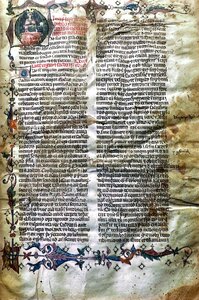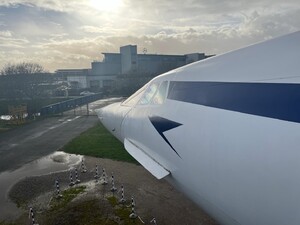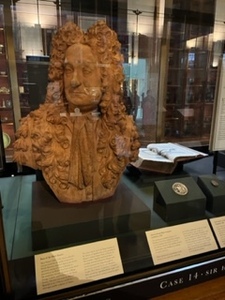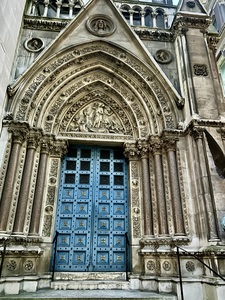
Browse Items (226 total)
Sort by:
-
First page of Otia Imperialia codex.
First page of a 14th century Italian manuscript of the Otia Imperialia by Gervase of Tilbury. The margins are well decorated, and the text is handwritten in Latin. -
Royal Society Library
This image is a picture of the Royal Society Offices. Inside they had the libraries/archives for the royal society. In this archive I looked through the old documents for my research. This research was for the 2024 Honors UAH London Study Abroad Class. -
British Airways Concorde nose from front exit stairs
The Concorde is the world's first supersonic commercial aircraft. Due to maintenance costs and noise issues, the plane was retired in 2003. Since then, Concorde has become a British icon. Exhibits such as this one at Brooklands Museum share a goal of presenting the innovation and passenger experience of Concorde. -
Bust of Sir Hans Sloane in the British Museum
This image is an image of Sir Hans Sloane. This is a terracotta bust. This bust was donated to the British Library after Sir Hans Sloane died. This bust was made by Michael Rysbrack. -
Tower of London tower green.
A field within the Tower of London. This is where nobility were executed, away from the traditional crowds. Katherine Howard was one of three queens beheaded here. -
Katherine Howard's letter to Thomas Culpeper
This is the only surviving letter written by Katherine Howard. It is addressed to Thomas Culpeper, whom she was accused of having an affair with. The letter can be interpreted in many different ways, from evidence of the affair to the possibility of Katherine being blackmailed. -
St. Peter's Cornhill.
A picture of St. Peter's Cornhill, a church that Sir Christopher Wren built after the London fire in 1666. -
St. Michael Cornhill.
St. Michael Cornhill is a church that stands on one of the oldest Christian sites in Britian, dating back to Roman occupation. It was rebuilt by Sir Christopher Wren in 1672 after the London Fire in 1666. The tower was built by Nicholas Hawksmoor in 1722. It was later restored by Sir George Gilbert Scott in 1860.








